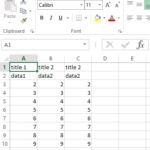Design of Experiments (DOE) in Excel
Design of Experiments (DOE) is a valuable methodology for optimizing processes and products through systematic experimentation. While conducting complex DOE analyses may require specialized software, Excel can be a useful tool for basic DOE tasks and preliminary analysis.
Here’s a guide on how to use Excel for Design of Experiments:
Define Your Experiment
Clearly define the purpose and goals of your experiment. Determine the factors (variables) you want to study, the levels of those factors, and the response variable you’re trying to optimize or understand.
Create an Experimental Design
Excel doesn’t have built-in tools for generating full experimental designs, but you can create basic designs manually. Use Excel’s worksheet to organize your experiment by listing factors, levels, and experimental runs.
Conduct Experiments
Perform the experiments according to your defined design. Record the data in Excel, with each row representing an experimental run and each column corresponding to a factor or the response variable.
Perform Preliminary Analysis
Excel provides various statistical functions that can help you analyze your experimental data. You can calculate means, standard deviations, and other descriptive statistics to gain insights into your data’s behavior.
Create Visualizations
Use Excel’s charting capabilities to create visual representations of your data. Visualizations like scatter plots, histograms, and line charts can help you identify trends and patterns.
Regression Analysis
Excel’s regression analysis tools can be helpful in determining the relationship between your factors and the response variable. You can perform simple linear regression or multiple regression to model these relationships.
Optimize Your Process
If your goal is optimization, you can use Excel’s Solver add-in to find the optimal settings for your factors that maximize or minimize the response variable. Define your objective function and constraints within Solver to perform optimization.
Interpret the Results
Carefully interpret the results of your experiments and analyses. Determine which factors have the most significant impact on the response variable and make informed decisions based on your findings.



